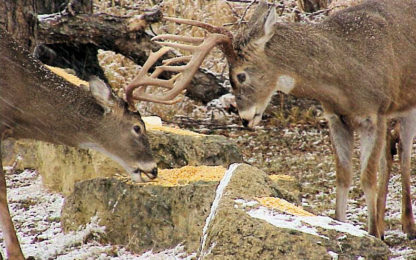Deer testing finds additional cases of chronic wasting disease
 A wild deer harvested in Dakota County on Nov. 7 and a vehicle-killed deer in Olmsted County on Nov. 4 were confirmed positive for chronic wasting disease. To date, 95 wild deer have tested positive for CWD in Minnesota.
A wild deer harvested in Dakota County on Nov. 7 and a vehicle-killed deer in Olmsted County on Nov. 4 were confirmed positive for chronic wasting disease. To date, 95 wild deer have tested positive for CWD in Minnesota.
The case of the Dakota County deer, an adult male, marks the first time the fatal neurological disease has been detected in a hunter-harvested wild deer in the newly established south metro disease management zone. The deer was harvested less than a mile from a CWD-positive wild deer discovered in March and was tested after the hunter provided the sample as part of the DNR’s voluntary sampling program.
The Olmsted County deer, an adult female, appeared to suffer injury from a vehicle before dying in Rochester. The resident who reported the dead deer brought the carcass to be sampled by DNR staff for CWD testing. While this is not the first wild deer to have the disease within deer permit area 643, it is the farthest northwest that CWD has been found in the southeast disease management zone.
The DNR has notified the hunter and resident who submitted the deer for sampling of the positive test results, and the meat and carcasses from both deer have been properly disposed.
“It’s concerning to see these two positive test results. We will continue gathering data to see how prevalent the disease is in these areas, and maintain our aggressive management response,” said Michelle Carstensen, DNR’s wildlife health program supervisor.
Since CWD was first detected in Minnesota in 2002, the DNR has tested more than 90,000 wild deer in the state.
CWD affects the cervid family, which includes deer, elk and moose. It is spread through direct contact with an infected deer’s saliva, urine, blood, feces, antler velvet or carcass. There is no vaccine or treatment for this disease.







